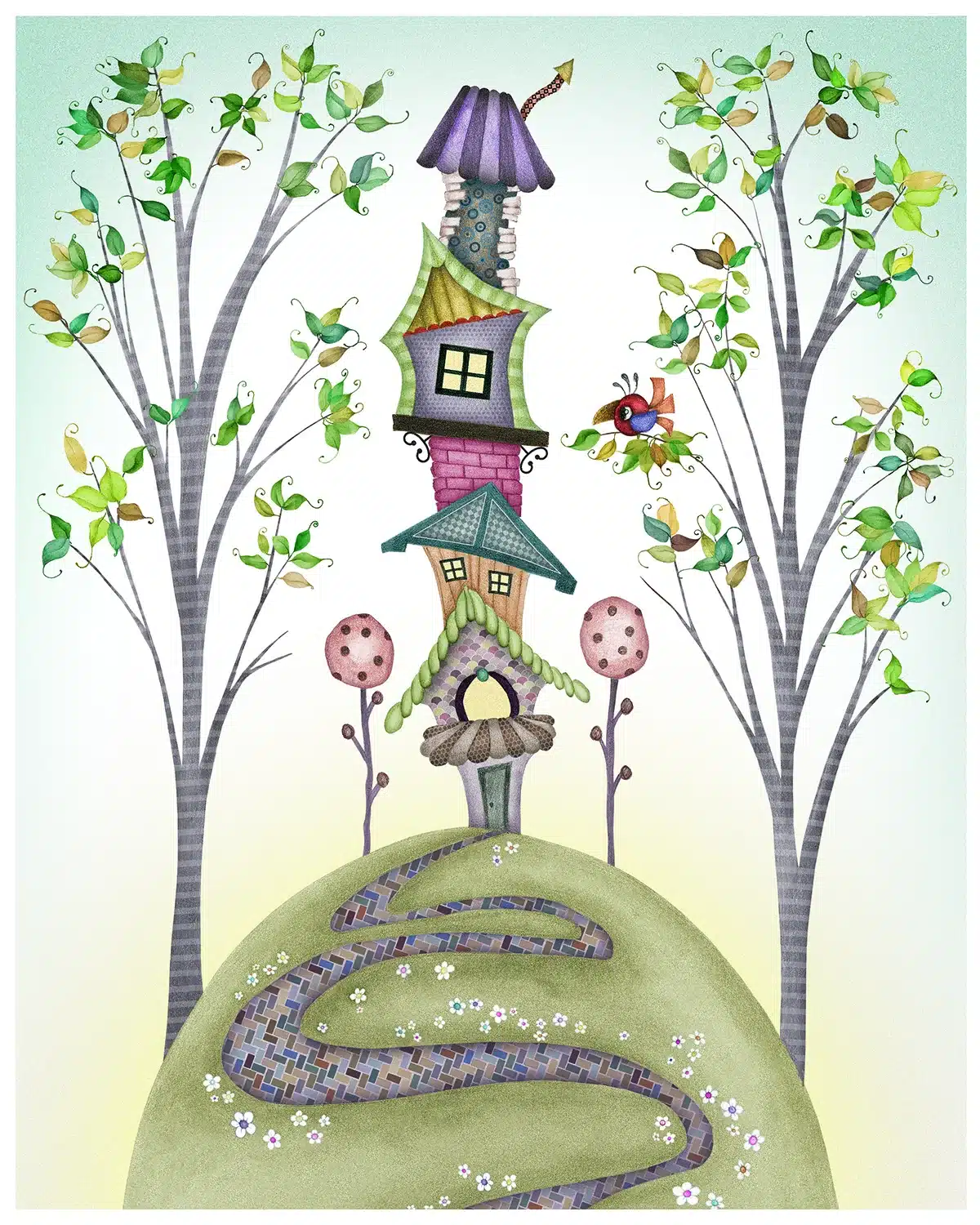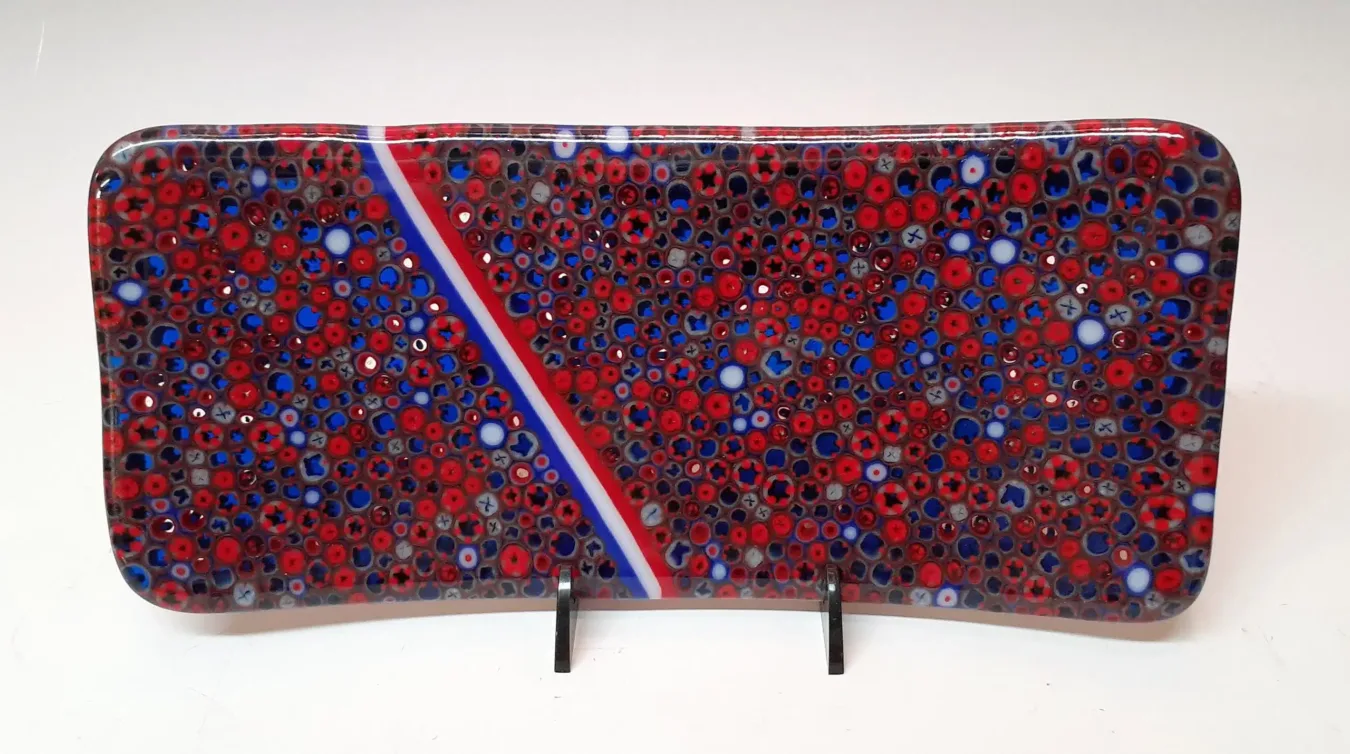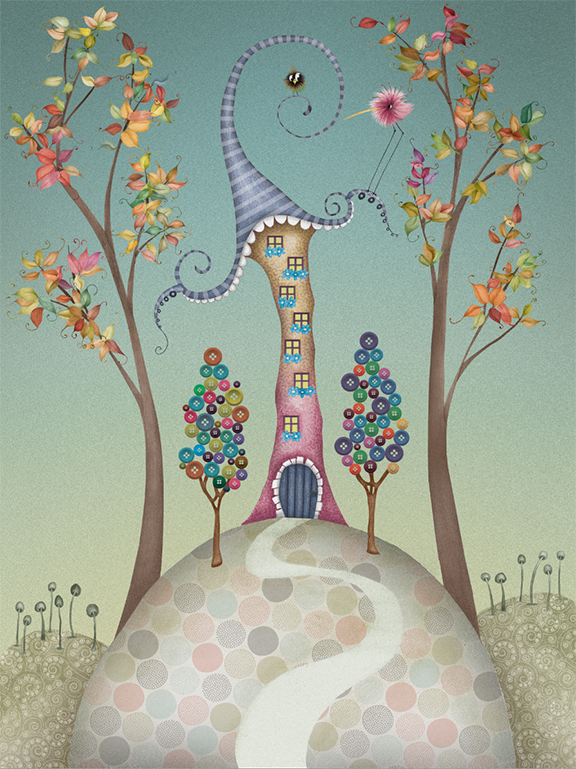These two Cape Girardeau painters write and illustrate children’s books in an unconventionally collaborative way. Their method is a fast-paced give-and-take that requires absolute trust, open minds, and a willingness to pick up and pivot.
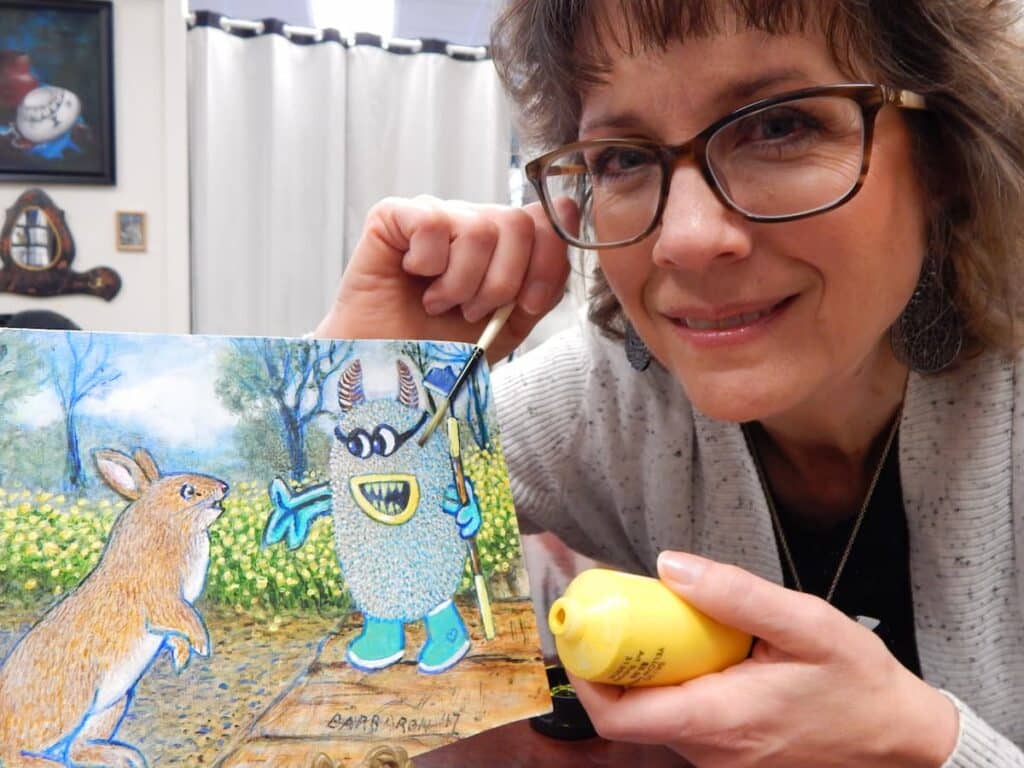
By Kelsie Schrader
Barb Bailey has been working on a painting for two hours. Sitting at a table in the middle of a quiet art gallery, she adds stroke after stroke to her painting. This painting is of a goat in a flower-filled field, and Barb likes how it’s turning out. She’s excited to keep working on it.
But fellow artist Aaron Horrell has a different vision. He takes the painting from her hands and gives her the half-finished one he was working on in return. He dips his brush and moves it back and forth across Barb’s almost-finished goat, changing some details and adding others. “That’s the way it goes,” he says. Barb shrugs and starts working on the next painting.
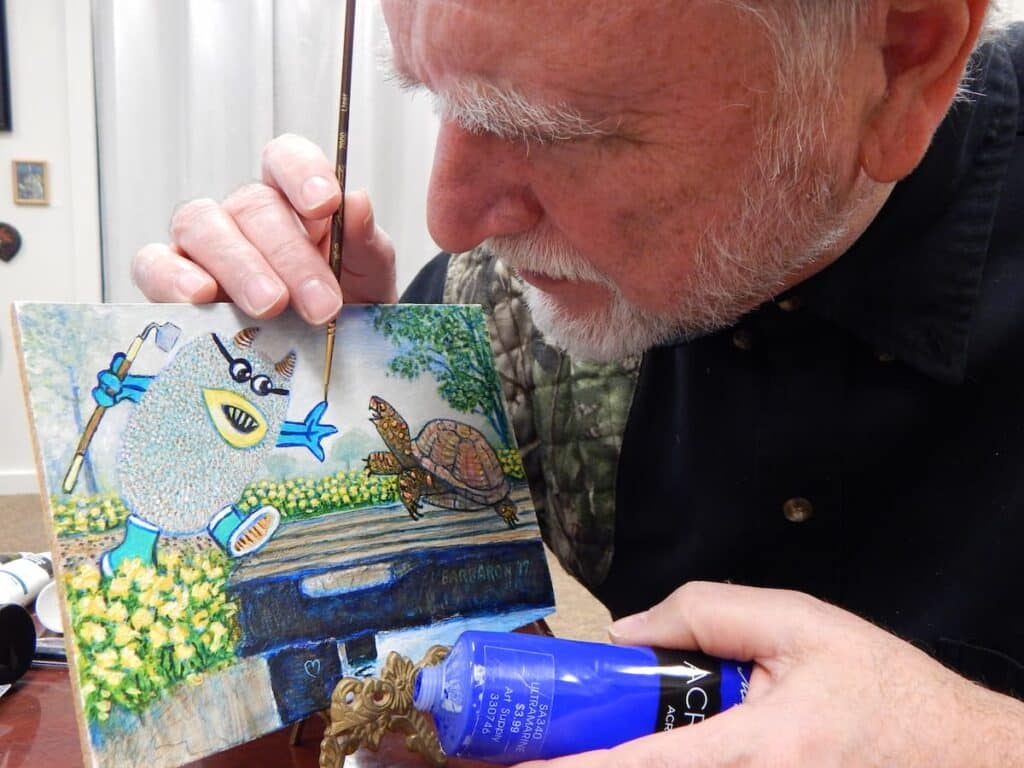
This isn’t unusual for them. The co-managers of Painted Wren Art Gallery in Cape Girardeau, both juried members of the artists’ association The Best of Missouri Hands, have been painting around and over each other’s work for years as illustrators and authors of children’s books.
The artistic friends met nearly four years ago at the gallery, which Aaron ran alone at the time. Barb’s gallery had closed down, so she walked across the hall and asked Aaron if she could display her items in Painted Wren.
Aaron was a self-taught painter for much of his life, and Barb, a long-time drawer, had always wanted to learn painting. She began painting with Aaron in hopes of learning more. She watched him work, and he offered her tips and tricks to improve her technique. The two worked well together, and they both knew it.
So one day, Aaron took the plunge. He asked Barb if she would be interested in trying out a more collaborative form of painting, one where the artists pass their pieces back and forth over and over again, adding and changing each other’s work until both agree it’s complete. “You can paint over anything I do, and I can paint over anything you do, and we have to be okay with that,” Barb recalls Aaron saying.
It was unconventional, but Barb was in. “I said, ‘Okay, sure, I know you’ll make it look good,’ ” she says, and with that, the two were off. They churned out painting after painting—often of animals, as both Aaron and Barb grew up on farms—and they displayed them at the gallery.
People soon began mentioning that the illustrations looked like they could be in children’s books. “We’d never thought about that before,” Barb says, “so we looked at each other and said, ‘Let’s do that.’ ” And they did.
Every aspect of their process is a collaboration. They brainstorm ideas for stories together, and they sit side by side at the computer. When it’s time to write, Barb types as the two determine what the characters will say and where the story will go next.
When the story is written, they sit next to each other to create the illustrations, passing them back and forth as they take the 6-by-8-inch masonite board from plain to painted. They call the paintings BarbAron minis, using a combination of their first names that they also use on their books.
The only time the two work separately is when they publish. Aaron, a seasoned photographer, takes pictures of the paintings. Barb uploads the images to the computer and uses Amazon’s CreateSpace to self-publish the books. “Neither of us could do it alone,” Aaron says. “We both know this.”
Aaron, who has tried to work with other artists in the past, calls his partnership with Barb a godsend. He says other artists he has tried to work with were possessive of their work and easily offended by changes. Barb isn’t like that, Aaron says. She respects his changes, and he respects hers. There aren’t any hard feelings about him making changes to her goat, and there won’t be any when she paints over his elephant. That’s just the way it goes.
“There’s a reason why we paint together,” Aaron says. “It doesn’t make any sense to either of us. When Barb’s gallery shut down, she could have gone down so many paths, but for whatever reason, she did walk across the hallway, and that’s tremendously important. I wouldn’t be here without her.”
The two have created more than 230 paintings together in three years, and they don’t intend to slow down.
“We have tons of ideas to produce,” Barb says. “I don’t know if we’ll live long enough to get them all done.”
All photos courtesy Barb Bailey and Aaron Horrell.
Related Posts
Lake of the Ozarks artist creates colorful tiles
This artist’s work made one young mother burst into tears. She paints bold, beautiful women in bright colors but also cozy, quiet cottages in pastels. Her intriguing tiles can be creative accents in any room. Discover where to see her work.
The Many Worlds of Artist Debi Pickler
Artist Debi Pickler isn’t content working in just one medium. Her art runs the gamut from hyperrealistic drawings to whimsical paintings to charming felted animals and beyond. Meet this versatile artist who is always thinking of something new.
An Artist Who Didn’t Know It
Glass artist Peggy King from Columbia creates many different items. Each is stunning in its own way. Read about her journey into the creation of art from glass and her commitment to Best of Missouri Hands.
No Rain Delay For This Missouri Artist
Missouri artist Debi Pickler began drawing and painting as a kindergartener, and had soon amassed quite a collection of work. She decided to stage an art show in her backyard. But before a single soul saw her creations, disaster struck.


